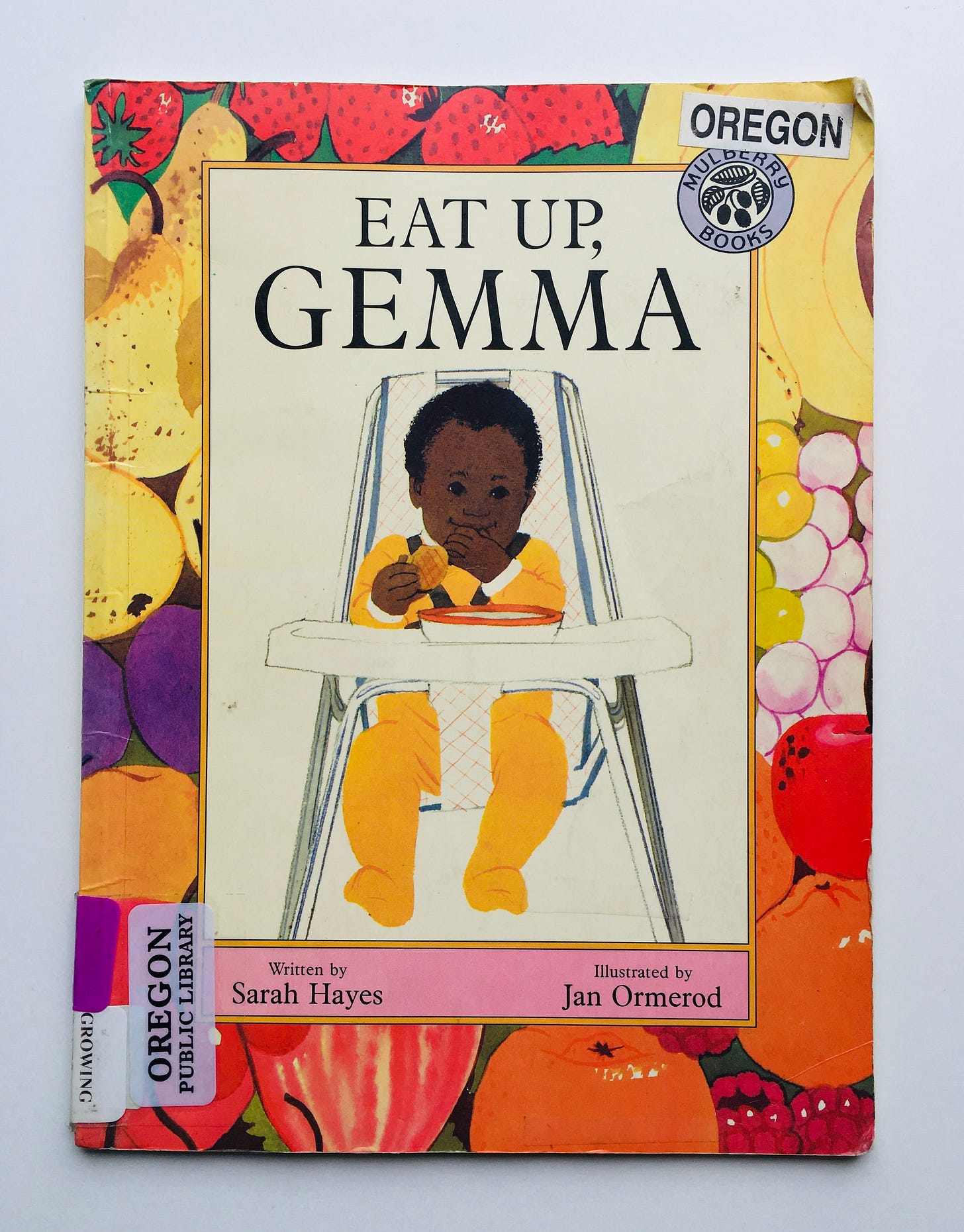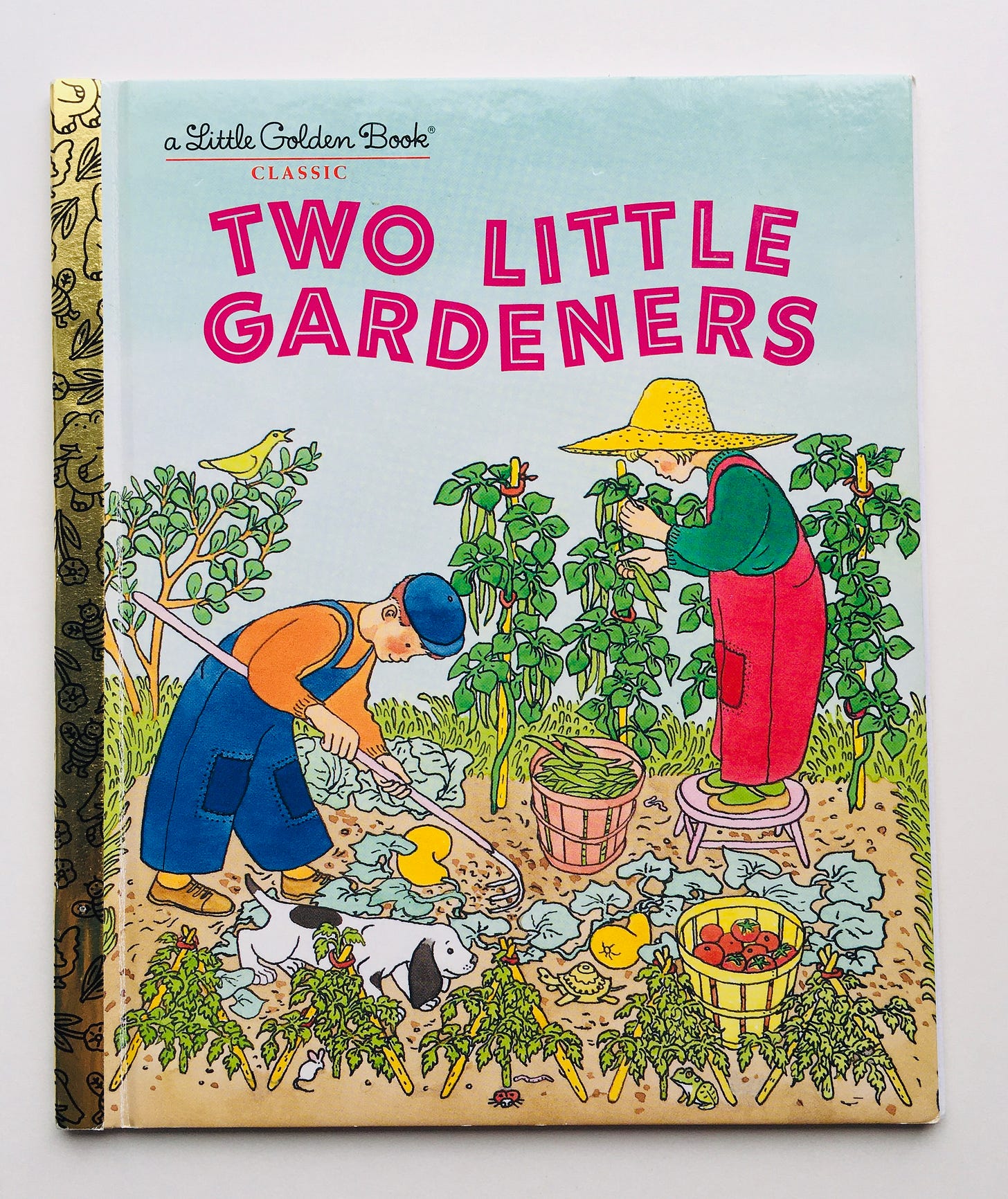Can we read? No.9
Sarah wore her black leggings, black leggings, black leggings, Sarah wore her black leggings all day long
Last week we un-enrolled our first grader from our public school district. We’re homeschoolers (for) now. Which really means: I’M GOING TO GET EVEN MORE BOOKS!
Are any of you in the same situation? (I am terrified? And relieved. And overwhelmed. And excited.) (Is it possible to just read a lot of good books and come out the other end okay? This is absolutely what my education has been. Also, what is “the other end,” anyway? If you have any thoughts/advice/questions for reflection/words of warning or wisdom, send them my way.)
Forward, in more ways than one…
Mary Wore Her Red Dress and Henry Wore His Green Sneakers by Merle Peek (1988)

I have to say upfront that this is a folksong, so if you know it, you should sing it (I’ll never stop saying that), but I don’t know it, so I never have. It’s good anyway. Full of bright colors, highly-anthropomorphized animals doing strange things, and lots of repetition — “Ryan wore his purple pants, purple pants, purple pants, Ryan wore his purple pants all day long” — it’s a hit with toddlers (one of those you might eventually need to hide for a day to give yourself a break; what, you’ve never done that?) The thing I like best is how much there is to look at and talk about here (see the scene where Ryan in his purple pants is walking along the railing of a gazebo right as a cake is being presented to the birthday bear. What the hell, Ryan? Who invited him, anyway?) It’s odd, this book, but that’s a large part of its charm.
Eat Up, Gemma! by Sarah Hayes, illustrated by Jan Ormerod (1994)

“One morning we woke up late. I couldn’t find my shoes and Gemma wouldn’t eat her breakfast. ‘Eat up, Gemma,’ said Mom, but Gemma threw her breakfast on the floor.” Told from the point of view of Gemma’s nameless older brother, the reader joins a family over the course of a weekend, tagging along with them during their normal activities and witnessing their failed efforts to get wonderfully stubborn baby Gemma to eat. The repetition of “Eat up, Gemma” will please small listeners, and parents will relate to the dilemma of a kid who won’t eat (can I get an amen? this is every. single. night. at our dinner table). This is a warm and loving family story — no one ever gets mad at Gemma, and everyone takes a turn in supporting her — with the perfect amount of humor that Ormerod’s illustrations play right into in a winsome way. I won’t spoil the ending, I’ll just say that when Gemma sees some plastic grapes on the hat of a woman sitting in front of her at church, her appetite returns, and big brother’s clever solution to the problem saves the day.
Daddy Makes the Best Spaghetti by Anna Grossnickle Hines (1988)

My husband makes the best spaghetti I’ve ever eaten (and my children agree) so I originally bought this book without even reading it. I’m glad I did. It’s a straightforward story — a father picks his child up from daycare, they grocery shop, cook dinner, wait for Mommy to come home from work, eat together, take a bath, and get ready for bed — but there are a couple things that stand out, and they are, in my opinion, especially unique. First, the child’s name is only mentioned once, on the first page (“Corey”) and throughout the book Grossnickle Hines’ illustrations leave it a little ambiguous as to the child’s gender. “Corey” could be a boy or a girl, and interestingly, when I ask my children what they think, they each have a different answer. I have no idea if the author did this on purpose — my hunch is not; it was written 30+ years ago — but I find it to be a great benefit, in 2020, to even inadvertently present a child whose gender is not absolutely defined. Second, not only does the father in this story do the daycare pickup, grocery shopping, and meal preparation, but the mother comes home in office-work clothes, just in time to sit down to spaghetti. It’s true that as a full-time work-outside-the-home (well, normally) mother I am 100% biased in favor of this depiction: but only because it is so rarely depicted, even now. So, this isn’t the most outstanding title in the world, it’s not even all that exciting, but I appreciate it deeply for the ways in which it subverts the dominant paradigm on a variety of levels, and that’s something worth sharing with kids.
Oh My Baby, Little One by Kathi Appelt, illustrated by Jane Dyer (2006)

When my oldest went through that extremely painful early toddler phase of separation anxiety, sobbing every morning when I dropped her at daycare, I quickly amassed a small collection of what I think of as “books for daycare kids,” though really, aside from a very (very) few titles that address that specifically, they are important for any child who has to be apart from their parents or caregivers. (If you want a list of those titles, hit me up.) Oh My Baby, Little One is so beautifully done — wonderfully written, with Jane Dyer’s characteristically sweet and detailed watercolor illustrations — I struggle not to cry when I read it, even now. The messaging here is pure reassurance: “But even when I’m far away this love I have will stay and wrap itself around you every minute of the day.” The special touch here is how Appelt flips this around the other way, showing how this love is with the parent, too: “It nestles in my collar while I get my day’s work done, I hear it whisper in my ear my baby, my little one.” This book is comforting, pure and simple, for a situation that feels (to everyone involved) anything but. We all need that sometimes.
Two Little Gardeners by Margaret Wise Brown, illustrated by Edith Thacher Hurd (1951, reprinted 2006)

I am not actually a huge Margaret Wise Brown fan — of course she wrote some smashing hits, but I find I can take or leave many of her titles (in point of fact I think some of her titles got published, especially posthumously, merely because she was Margaret Wise Brown). This is not one of those. It’s very simple and very straightforward, what happens here — it’s spring, and two children plant a garden, and they take it through from beginning to end, when in the fall they reap and preserve their harvest — but that’s the appeal. This happened, and then this happened, and this, and this, and this can manage to be both informative and fascinating, and Wise Brown pulls this off to such a degree in her practiced, rhythmic manner that it’s almost poetry: “Then the garden grew and it grew and it grew. The corn tassels bloomed. And the pumpkins got fat. And the beans grew long. And the carrots pushed up through the ground. And the cabbages looked like great green roses all in a row.” Elliott’s illustrations show every bit of the happenings of the garden, and the work that comes from preserving its bounty, and the plenty that the work provides — and the older readers among us might notice that when children do all these things, the children end up growing too.
That’s all for now. I’m going on a careful in-state vacation next week to recharge my soul on the shores of Lake Michigan like I have done every year of my life, and I intend to publish this from my phone, but in the event of unforeseen technology problems, it may end up being a week of hiatus. (Like a hiatus within a hiatus within a hiatus?)
As my boss would say: be good.

